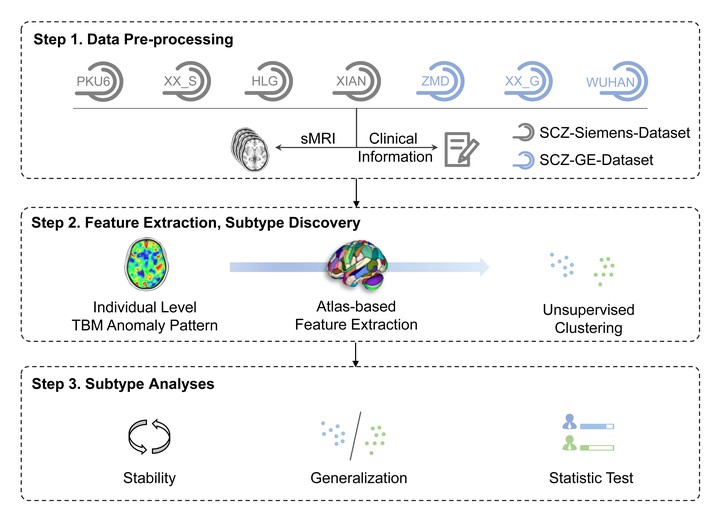Two Subtypes of Schizophrenia Identified by an Individual-level Atypical Pattern of Tensor-based Morphometric Measurement

Abstract
Difficulties in parsing the multiaspect heterogeneity of schizophrenia (SCZ) based on current nosology highlight the need to subtype SCZ using objective biomarkers. Here, utilizing a large-scale multisite SCZ dataset, we identified and validated 2 neuroanatomical subtypes with individual-level abnormal patterns of the tensor-based morphometric measurement. Remarkably, compared with subtype 1, which showed moderate deficits of some subcortical nuclei and an enlarged striatum and cerebellum, subtype 2, which showed cerebellar atrophy and more severe subcortical nuclei atrophy, had a higher subscale score of negative symptoms, which is considered to be a core aspect of SCZ and is associated with functional outcome. Moreover, with the neuroimaging–clinic association analysis, we explored the detailed relationship between the heterogeneity of clinical symptoms and the heterogeneous abnormal neuroanatomical patterns with respect to the 2 subtypes. And the neuroimaging–transcription association analysis highlighted several potential heterogeneous biological factors that may underlie the subtypes. Our work provided an effective framework for investigating the heterogeneity of SCZ from multilevel aspects and may provide new insights for precision psychiatry.